Spellman-Sponsored Clean Tech Competition Selects Winner of $10,000 Science Prize
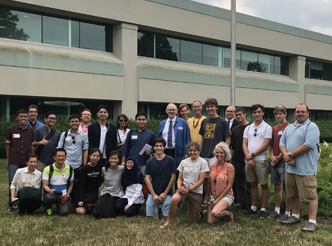
The 6th Annual Clean Tech Competition, developed by the Rockville Centre based Center for Science Teaching and Learning, (CSTL), concluded on Friday, July 14th at Stony Brook University’s LDS Center. It was the first year Spellman sponsored the competition and the first year it was held at Stony Brook.
The competition challenged high school students from across the globe to come up with ideas on how to create a greener future – this year focusing on remediation solutions for “sick buildings”. The ten finalist teams beat out 320 other teams from 26 countries to vie for the top three awards–$10,000 for first place, $7,000 for second and $5,000 for third. In addition to the $10,000 top prize, the winning team will have the opportunity to expand on its relationship with a professional mentor who advises and assists the team in furthering its work and education.
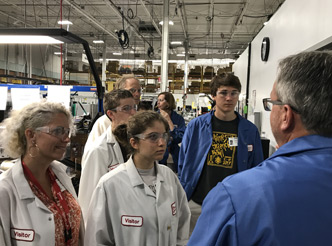
"Our organization is all about encouraging students to study and experiment with science. This competition was developed to challenge young minds to go beyond basic studying of science, and create innovations for the common good," said Dr. Ray Ann Havasy, Executive Director, Center for Science Teaching and Learning.
The day before final judging, Spellman hosted the finalists at their Hauppauge headquarters, giving the students and their parents, teachers and guardians the chance to visit manufacturing facilities and see science in action – something high school students rarely get the opportunity to see. Following brief presentations by Dr. Loren Skeist, Jim Willsey and Paul Treglia, the students and their parents enjoyed lunch and personal tours of the Hauppauge facility. The students were extremely engaged, asking a lot of questions on their tours. In fact, some seemed to be inspired with ideas for next years’ Clean Tech Competition!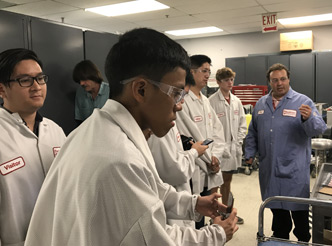
According to Dr. Loren Skeist, President of Spellman High Voltage and sponsor of the competition, “Spellman was honored to be able to sponsor this year’s Clean Tech Competition. Conversations with these students, during their visit to our facilities and at the competition itself, both impressed and encouraged all of us because of their commitment to science and sustainability. Their projects, and in some cases, inventions, were absolutely amazing. I look forward to working with CSTL on next year’s competition”.
The day of competition started with the students presenting their projects to the judges, one from CSTL, one from Stony Brook, and Rich MacArthur from Spellman. Judging was done according to a rubric evaluation of ten qualification areas. After lunch, an Intellectual Property Attorney spoke to the students about how to protect their inventions, followed by the announcement of the awards.
Third place was awarded to Jobin Goji, from Fort Lauderdale, Florida, who created a portable low-cost filtration system for kerosene lamps aimed at combatting sick building syndrome (SBS) in low-resource regions. This team created a cost-effective, efficient and sustainable device that would have the capability of removing toxic air pollutants and chemicals from the exhaust of kerosene lamps and other combustion-based lighting sources and provide a solution to combustion-induced SBS.
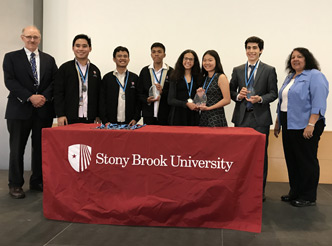
Second place was awarded to a team from the Philippine Science High School in Quezon City in the Philippines consisting of Mr. Justin Opulencia, Mr. Batara Maded III and Mr. Philippe Bungabong. The team developed an integrated online system for the regulation of household electricity consumption that allows users to regulate their household appliances’ electricity consumption and see the electric usage in graphical form. This is intended to help households save on financial and electrical resources, particularly where electricity is in short supply as in many rural homes.
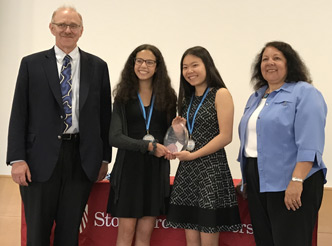
First place was awarded to Alyssa Iriyami and Audrey Shine, from Plainview Old Bethpage High School here on Long Island, for their project called “Super Silk”. Utilizing Bombyx mori in the production of polymeric graphene enhanced “SuperSilk”. This team used a special diet of graphene infused food to create a super-strong silk made from the Bombyx mori. This diet helped increase the tensile strength and optimal chemical properties as a result of Graphene integration render SuperSilk the prime candidate for use as a membrane in the creation of a filtration device, particularly regarding purification of water in both rural and urban communities around the world.
Dr. Skeist commented: “These brilliant minds represent the leaders of the future in this growing and important field and we, along with CSTL and Stony Brook University, are proud to support their endeavors in clean technology and sustainability.”
About Spellman High Voltage Electronics Corp:
Spellman High Voltage Electronics is the world's leading provider of high performance, custom and standard DC high voltage power converters and Monoblock® X-Ray sources for medical, industrial, semiconductor, security, analytical, laboratory and under-sea cable power-feed applications. As a global supplier with strategically located design and manufacturing facilities in North America, Europe and Asia, Spellman is committed to providing best-in-class support to OEM customers and end-users throughout the world. For more information, contact: Suzanne Muller at smuller@spellmanhv.com.
About the Center for Science Teaching & Learning:
The Center for Science Teaching & Learning (CSTL) is a not-for-profit organization whose mission is to encourage science learning and literacy. CSTL develops programs for people of all ages and utilizes inquiry-based learning as its foundation for program development. For more information, visit www.cleantechcompetition.org, or contact: Dr. Ray Ann Havasy at RayAnn@cstl.org.


